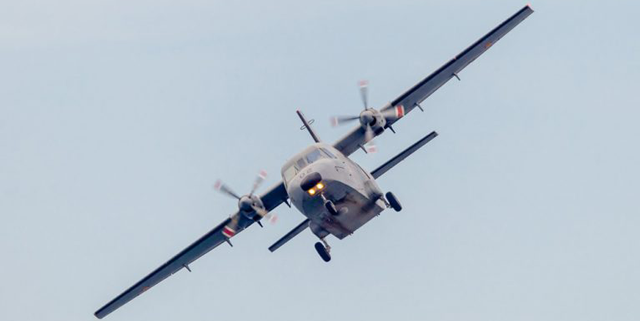
In November of 2017 the FAA reminded industry of the upcoming changes to training in their Information for Operators (InFO) titled, “Enhanced Pilot Training and Qualification for Part 121 Pilots.” The InFO states that in accordance with revised simulator qualification standards, after March 12, 2019, high fidelity full flight simulators must be specifically qualified in order to conduct the training or checking of upset recovery, recovery from full stall and stick pusher activation, and a variety of other scenarios not previously trained for with such accuracy. It appears that the FAA is trying seriously to communicate this requirement for enhanced training well in advance. As they pointedly put it in their InFO, “The FAA will not authorize a deviation to the requirements of Section 121.423 due to the carrier’s lack of planning.” The FAA acknowledges in their InFO that there will be some operators who will require deviations from the simulator requirements if no appropriately modified simulators exist for a given aircraft type.
If it sounds like this enhanced Upset Prevention and Recovery Training (UPRT) for airlines is important to the FAA, it should be. The NTSB has identified Loss of Control In-flight (LOC-I) from aircraft upsets as the number one cause of fatalities for every segment of aviation. Congress only required enhanced UPRT for pilots of airlines, where the majority of their constituents fly. But regardless of what type of aircraft or operations pilots are involved with, comprehensive UPRT was identified as the leading way to mitigate LOC-I by the Loss of Control Avoidance and Recovery Training (LOCART) Aviation Rulemaking Committee; one of those formed by Congressional requirements. This is a case where training standards which are good for the airline world are good for all of aviation.
“Part 121” refers to the section of the Federal Aviation Regulations pertaining to airlines. In 2009, following the crash of Colgan 3407, a part 121 air carrier, in an accident involving a Loss of Control In-flight (LOC-I), the U.S. Congress made a few changes in how pilots are trained. While it could be viewed that the Federal Aviation Administration (FAA) was the entity making the changes, those changes were directed by Congress as part of Public Law 111–216, otherwise known as the Airline Safety and Federal Aviation Administration Extension Act of 2010. The legislation made many demands regarding pilot training, and although the act was put into place in August of 2010, some of its elements will not be fully realized until March of 2020.
In the legislation referenced, Congress initiated a series of requirements for the FAA associated with the extension of funding for their operations; there were literal purse strings attached. Among these were several related to pilot training. Most of these began with an Aviation Rulemaking Committee (ARC) whose work was mandated in a charter to be executed. Primarily made up of volunteers from industry, these ARCs were chartered with a variety of training related issues to be considered, with reports issued back to the FAA.
These were primarily, but not exclusively, at the airline level. An example that many pilots will be familiar with is the removal of the objective standard for minimum loss of altitude in testing for stall recovery. Generally speaking, minimizing altitude requires some back pressure on the controls, while reducing the angle of attack requires some forward movement of the yoke or stick to reduce the angle of attack to eliminate the stalled condition. After consideration of this contradiction, the requirement for minimum loss of altitude was removed from all stall training and testing, along with a variety of other measures to make stall training less of a prescribed maneuver, and more closely related to fixing undesired aircraft states in the real world.
During this time, it became better understood that the flight simulators being used to train nearly all pilots of major airlines were not capable of accurately replicating all of the conditions pilots might encounter in an actual stall in the aircraft, nor were they required to. Since the simulators were made for training, they were only certified for the training they were designed to provide. In the case of stalls, that meant that they were only required to be accurate to the first indication of a stall, since that was the point where pilots were required to demonstrate recovery, and therefore where training stopped.
Because of this link between the training tasks required of pilots, and the devices used to train them, the FAA could not change the way commercial airline pilots were trained, without improving the capabilities and qualification standards for flight simulators to increase their fidelity in providing training where they had not before, specifically, beyond the first indication of stall.
Ultimately, as a result of the various Aviation Rulemaking Committees mandated by Congress, the FAA changed training requirements for both pilots and the simulators used to train them. In November of 2013, the FAA issued the Qualification, Service, and Use of Crewmembers and Aircraft Dispatchers Final Rule, which implemented enhanced pilot training and qualification for part 121 (commercial airlines), including stall and upset prevention and recovery training. A few years later, in March of 2016, the FAA issued the Flight Simulation Training Device Qualification Standards for Extended Envelopes, which improved existing technical standards and introduced new technical standards to define flight simulation training device (FSTD) fidelity requirements to conduct the enhanced pilot training and qualification.
For airlines flying aircraft for which enhanced simulators with the required extended envelopes do not exist, the FAA has opened the door for deviations which can meet the desired learning objectives. As the world’s leader in UPRT, APS stands ready to help all operators identify a pathway that mitigates their number one threat: Loss of Control In-flight.




Comments: